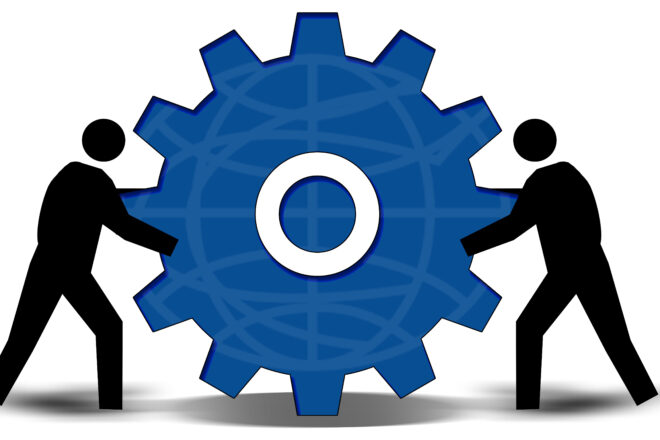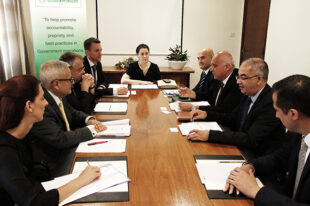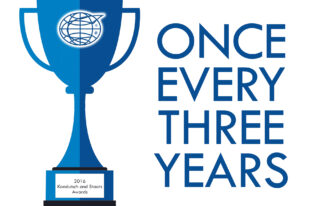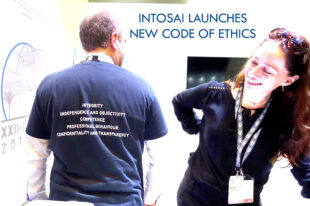Working Together to Develop, Achieve Success

Each one of us, each institution in the world can benefit a lot today through sharing knowledge and experience …
Dr. Hussam Al Angari, President, General Auditing Bureau, Saudi Arabia
The whole is greater than the sum of its parts. This famous quote from Aristotle particularly rings true for the International Organization of Supreme Audit Institutions (INTOSAI).
As we embrace the strategic goals of INTOSAI’s Strategic Plan and further reflect on the themes of INCOSAI XXII related to the 2030 Agenda for Sustainable Development and Professionalization, so, too, must we use what we learn, what we experience to increase our power as an organization, to reach optimum efficiency…to develop the capacity of INTOSAI.
Einar Gørrisen, Director General, INTOSAI Development Initiative (IDI), believes INTOSAI and its members must nurture the people, the organization and the institution to achieve successful capacity development.
It is the institutional growth that distinguishes capacity development from capacity building. Capacity building, traditionally, centers on people and the organization. Capacity development incorporates professional people and organizational growth with the concept of institutional capacity, which Gørrissen admits can be a hard thing to define.
“Institutional capacity is the ability of the organization to deal with the stakeholders. It’s also about taking opportunities. It’s about positioning the Supreme Audit Institution (SAI) in the context and the culture of the society, so they can actually make a difference,” he said.
Gørrissen went on to add, “For me, the success of INTOSAI is really mirrored in the success of SAIs. If INTOSAI, its regions and IDI are successful, that should really result in stronger, more independent SAIs that can produce better, more timely audits and ultimately deliver more value to all citizens.”
“We don’t exist to exist. We exist for the SAIs,” Gørrisen affirmed.
Dr. Harry Azhar Azis, Chairman of the Audit Board of the Republic of Indonesia and Chairman of INTOSAI’s Working Group on Environmental Auditing, agreed, indicating the goal, ultimately, is for SAIs to add value. Azis offered a number of items that will spell success for the future of INTOSAI, acknowledging the importance of the themes discussed at INCOSAI XXII, as well as coming together in ways that are both productive and meaningful.
Unless we get our message across effectively, we are producing very nice paper weights in the process … We have to make an impact. That’s our job!
Annerie Pretorious, Communication Manager for AFROSAI-E
With the adoption of the SAI Performance Measurement Framework (PMF) at INCOSAI XXII, there is now a mechanism for measuring performance against International Standards for Supreme Audit Institutions (ISSAIs) along with other established international good practices. The framework, developed by the INTOSAI Working Group on the Value and Benefits of SAIs (WGVBS), was implemented in partnership with INTOSAI bodies, including a number of SAIs that piloted the framework from 2013-2015. The INTOSAI-Donor Cooperation supplied financial support for its development and global roll-out.
The SAI PMF implementation strategy was also approved at INCOSAI XXII. The plan clearly vests ownership and its implementation in the hands of INTOSAI and places the Capacity Building Committee (CBC) and IDI as leads for supporting INTOSAI strategic governance and operation respectively.
Mr. Kimi Makwetu, SAI South Africa Auditor General and CBC Chairman, believes capacity building is at the heart of success, including “properly trained, well-experienced members of staff; good, strong leadership that’s ethical, as well as governments that recognize the value of our institutions that operate independently.”
Using the SAI PMF is a good start. Learn more about it here.
Annerie Pretorious, Communication Manager for the African Organization of English-speaking Supreme Audit Institutions (AFROSAI-E), indicates communicating is also a crucial component to SAI success.
She admits communication can sometimes be an obstacle. When it comes to communication, there is “definitely room for improvement, and it’s not necessarily something that comes naturally to the audit methodology process.”
“The message we’re trying to get across, and I’m trying to get across, is that unless we get our message across effectively, we are producing very nice paper weights in the process. No audit report should get tabled if it’s not going to lead to change. We have to make an impact. That’s our job!” Pretorious emphasized.





